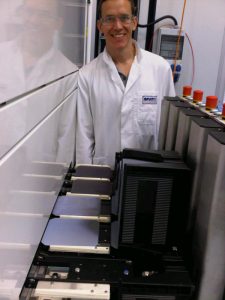While gasoline prices have recently dropped, electric costs are skyrocketing! Gasoline for all of the 90s was about $1 a gallon, oil $18 a barrel, natural gas was $2 for a thousand cubic feet and residential electricity in Florida was 8 cents a kWh. Gasoline at its peak last year was over $4, oil over $140 a barrel, and natural gas over $11 for a thousand cubic feet and residential electricity in Florida was 12 cents a kWh. In the last several months, the price of electricity to some consumers in Florida has reached 15 cents per kWh. The average Florida customer who used 1,250 kWh of electricity per month paid $120 in 2005 and $152 per month in 2008. In 2009, the average customer will be paying more than $160. So by doing nothing, the price has gone up more than $40 per month (33%) since 2005. Some customers will be paying $188 per month, a $68 per month increase (50%) since 2005!
Alternative energy is called alternative, until it is cheaper, but cheaper than what? – electricity out of the wall at 12 cents yesterday, 15 cents today, 18 cents tomorrow? Are you aware that people in the U.S. pay different amounts for electricity? The average residential retail price of electricity in the U.S. was 10.6 cents per kWh in 2007. Florida was 11.2 cents, most southern states were about 9 cents, WV 7 cents, UT 8 cents, NY and CT about 18 cents, and CA and NJ 15 cents. So, states that burn coal have the cheapest electricity rates. Places like Utah and West Virginia burn their own coal, so even though they get all the pollution and the greenhouse gasses, at least they get to keep all their money, unlike Florida which ships more than $25 billion out of state to purchase fuel. Florida has already been paying more for cleaner burning fossil fuels than the Southern states to our north. We are now paying more for natural gas than we are for coal, and that price increase is more than what is being suggested to add to our electric bills for solar energy.
New Jersey has more solar than Florida because homeowners in NJ have a Renewable Portfolio Standard, and fees (collected into a Public Benefit Fund) are used to incentivize the homeowner for solar on their roof. If such a fund collected $1.50 on your electric bill in Florida, we could have the equivalent of California’s Million Solar Roofs Program. Clearly $1.50 is less than the $40 a month cost of doing nothing. While solar water heating is cost effective today, solar electricity (photovoltaics) without a subsidy is not cost effective today, but the subsidy is still less than the cost of “accelerated cost recovery” for nuclear power. What about the jobs? These jobs will not be in China and India, they will be done by your neighbor. Vote Solar estimates that more than 3,800 megawatts (MW) of solar could be added by 2020 and with it approximately 85,500 new jobs in Florida. What a great way to love your neighbor.
Jim Fenton, Director
Florida Solar Energy Center
